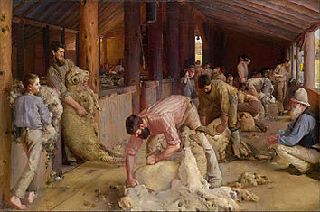Bread and Cheese Clubs: Male Kindred Spirits
Creative Community
Some time back I received some very interesting mail from A&R of Wheelers Hill which I didn’t have time to attend to before Christmas. Santa has left us and I’m trying to get rid of the Elves so its time to get down to some serious study of the Bread and Cheese Clubs - one established here in Melbourne in 1938 and was in existence for 50 years, the other establish a hundred years earlier in 1824 in New York City and lasted only 3 years. I have not been able to determine if the Australian club was in any way based on the American one but what is obvious is the purpose in forming the clubs: and that was to invite Male Kindred Spirits to gather together as a community to foster art and literature. We have a personal connection to the club as the father of A of A&R of Wheelers Hill was a member of the Melbourne The Bread and Cheese Club which was in essence an Australian Art and Literary Society and also Publisher. A has lent me one of the books published by the club which will feature tomorrow as it was a tribute from this male dominated organisation to one of Australia's leading female writers which is very interesting.
Mateship
One of our themes this year will be to examine the changing image of men and women as perceived by artists. The period in which the Melbourne based Bread and Cheese Club existed and the Mateship they promoted arose out of the pioneer days of early Australia. Back then physical work which could only be managed by men was a natural consequence of the harsh environment and meant the difference between surviving or dying. Many of the early paintings depict this concept.

(Credit: National Gallery of Australia)
Shearing the Rams by Tom Roberts (1856-1931)

(Credit: Art Project)
The artists of the time weren't implying that women didn't work as suggested by many of the European portraits created around this time. In the pioneer countries such as Australia, Canada, America, the woman's role was to bear the children and care for the family: alone. The physical work was so demanding that the men worked together and so friendships were forged and the concept of mateship began. And of course, not only were the women confined to the house which very often was isolated from any habitation, there were far less women than men in the early days of settlement. On the Wallaby Track by Frederick McCubbin poignantly illustrates the situation.

(Credit: Wikipedia)
But the cementing of mateship didn't really occur until the fledgling nation became involved in war and sent her young men away to fight to save Britain as we were bound by the crimson thread of kinship and a proud junior partner in the empire.(bbc.co.uk)

(Credit: Australian War Memorial)
The mateship that evolved out of World War 1 was tested again in World War 11 and several more wars since that time. No doubt the men who were left behind back home because they were either too old or too ill to fight, joined together in groups such as the Bread and Cheese Club (which was formed only a year before WW11) to talk long into the night about how much they missed not being able to join their mates on the battle field and fight for our "Mother Country" England and the principles they fervently believed in. A’s father William Richard Percy Stone we know had served in World War 1 in the Medical Corp (6th Field Ambulance) and I just wish A could channel his conversation from this time and from the club back to us.

(Credit: anzacportal.dva.gov.au
Hele was Australia's longest serving war artist and completed more commissioned works than any other in the history of Australian art.(Wikipedia)
The Hero Image for today is by sculptor Peter Corlett, who in 2010 received the Order of Australia for his services to Australian visual arts and who created this famous sculpture, Cobbers. This bronze sculpture pays homage to heroic mateship, an idea central to Australian Identity. (artloversaustralia.com.au)
Post Script. I am not suggesting that Mateship only exists amongst Australian men. Having never lived outside Australia I have little idea about the concept of friendship and mateship that I am sure exists amongst men of all countries. Somehow over the passing of time mateship has become closely associated with the Australian male, particularly those of past generations who wear this mantle with pride- but sometimes regrettably to their own detriment. But that is a discourse I will not engage in. As far as the blog is concerned and as the daughter of a Digger and early pioneer families I salute all the good that mateship has done (and continues to do) for the men of Australia.
